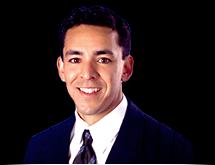 Today is the last day of SES New York, my brain feels like it’s going to explode, and I still have my presentation this afternoon (which Molli will blog about tonight for all of you wondering what a communication person is doing at a search conference – I’m still trying to figure it out!).
Today is the last day of SES New York, my brain feels like it’s going to explode, and I still have my presentation this afternoon (which Molli will blog about tonight for all of you wondering what a communication person is doing at a search conference – I’m still trying to figure it out!).
This morning’s keynote speaker was Yusuf Mehdi, senior vice president of the online audience business at Bing. As you know, I like the personal stories, so that’s where I’ll begin.
Yusuf has been at Microsoft for 19 years and he described being in a developer’s office many years ago. The guy did a command, ping run “with a bunch of numbers” and said, “Look at that!” Yusuf asked what happened and the developer said, “I just sent data to Italy and Switzerland and back to Seattle in less than a second.” He asked what that meant and the developer said, “I have no idea, but it’s going to be huge!” And that is how Internet Explorer was born.
Bing is a platinum sponsor of the conference so Yusuf showed how Bing works, on the back end, and also demonstrated their new mobile platform (which isn’t yet out).
A few things to keep in mind, from a business perspective, of things coming in the future.
Your HTML pages are still important. Making sure the basics of your Web site are still important, which means having well designed and well formed HTML pages so they can be crawled.
Gini’s note: Go to Web site Grader and enter your URL. Scroll about halfway down the page to “Last Google Crawl Date.” You want to have a date there, preferably very recent (ours was yesterday, as of publishing this). If it says N/A, you have a problem. Your HTML pages are not well formed, which means you need to get someone in quickly to fix them!
Search was initially very good at navigation. Then page rank was all about the anchor text (or keywords) and the links you had on your site. Now consumers are using search for advanced research and to complete transactions which is not what search was designed to do.
Understanding user intent is the future. Intent drives to task and task drives to action. What this means is, as business leaders, we have to figure out why people come to our Web sites or blogs, what they do there, and how we get them to do what we need them to do (i.e. subscribe, purchase, etc.). But also how we satisfy the long-term need by keeping them coming back.
Shopping comparison sites won’t die, just change. There are still many opportunities with shopping comparison sites, but Bing wants to have only one set of capabilities. Which means you can still compare, but the sites will be listed on the search page and give you the comparisons right there without ever having to leave.
As for what Bing is doing specifically…
* They are designing the next search to allow for a dialogue with the consumer. The end user is taking the lead now and the more you understand that, the easier it will be to guide them through search.
* To be found at Bing, make sure your URL is crawled properly, that you have the right keywords, that you focus on matching relevancy on keywords off your page, and that the link anchor text describes the page.
* Bing has just formed a partnership with Foursquare, which allows users to explore cities in a different way…and be found on Bing, based on what is relevant to your interests.
Gini’s note: Their ads are interesting because they’re targeting geeks and early adopters. So, if you want to be considered an early adopter or a technology geek, switch from Google. Now.